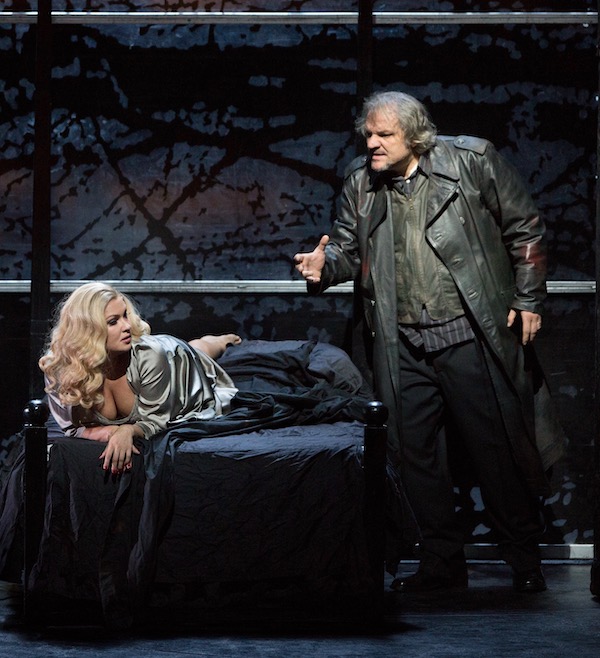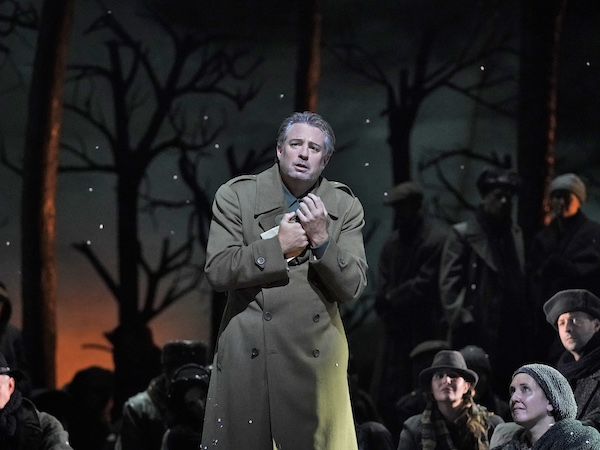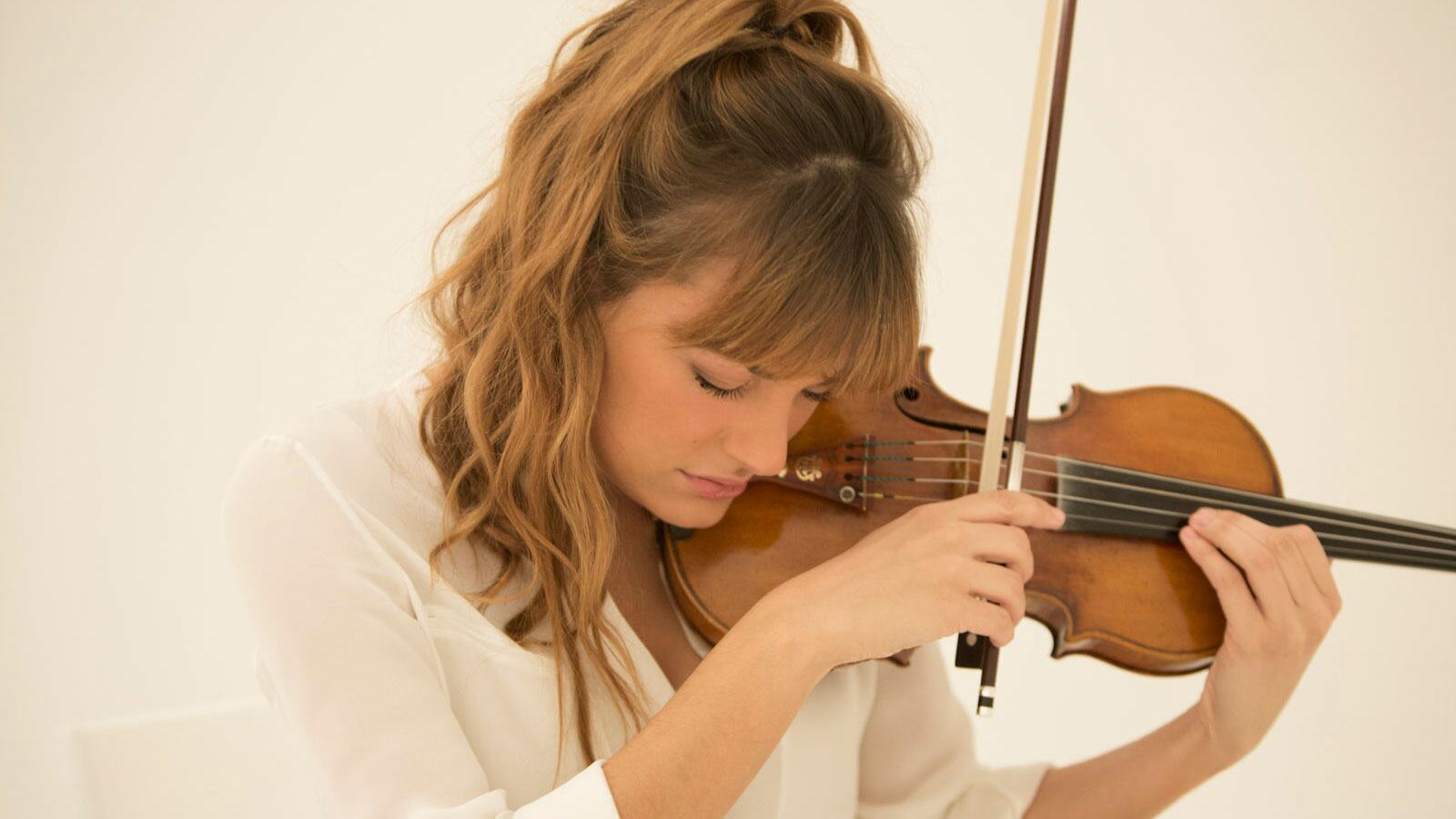(Credit: Ken Howard / Metropolitan Opera)
It was supposed to be the hottest ticket in town.
It was the first time Anna Netrebko and Plácido Domingo would grace the Metropolitan Opera together in a production. But we all know how that turned out.
For weeks, Met audiences had no clue what to expect. The company said nothing as it awaited an investigation from the LA Opera. And then, less than a week before the sold-out opening, a report came out stating that Domingo was destined for the Met and the orchestra and chorus members were angry. Domingo then proceeded to sing the dress rehearsal for “Macbeth” before general manager Peter Gelb finally made his first (and to this point only) cameo appearance in this lengthy drama to defend the famed singer. But then, a day before “Macbeth” was set to open, Domingo withdrew, effectively ending his career with the company.
It was the inevitable outcome ever since the AP made its announcement back in August, but the emotional roller coaster of the past few days, especially for those involved in this production, didn’t stop on Tuesday with Domingo’s departure; the final stop came in Wednesday’s opening night, which for better or worse could be considered a public dress rehearsal. Baritone Željko Lučić, despite being scheduled for later performances, did not really get much time to rehearse the revival with the cast for the opening.
And the effects of that were visible on this night, which was very challenging to review given the circumstances. As follows, we will relate what was experienced on opening night with the rare but essential caveat that things are likely to be better in future shows.
Underpowered Couple
Verdi’s Macbeth hinges on the relationship between the two central characters. Unlike Shakespeare who gave Macbeth and Lady Macbeth a few scenes together, Verdi developed the couple’s relationship through various recitatives, duets, and concertatos. The tension builds within each scene with Lady Macbeth’s dominance exploding at the end of the opera in their final duet. Without a power couple to explore the dynamics of this relationship, the work could feel static and uneventful. This was definitely the case on opening night of this run.
In their opening scene together, Netrebko attempted to sexually seduce her Macbeth by lying on the bed and grabbing his arms. But Lučić did not respond and it was clear that his focus was on the maestro. During the following duet, after which Macbeth commits the murder, Netrebko hovered over Lučić, kicking him and placing her legs over his body. But he would not respond in anyway to her.
Most telling was the scene at the opening of Act two where Netrebko toyed with a gun in her hands as she attempted to seduce him once again. Lučić didn’t look at her in any instance and instead looked like a weakened tyrant that was near the end of his reign. The same lack of chemistry continued through the banquet scene at the end of Act two where the Serbian baritone did not react to Netrebko’s fury as she forced him to dance. Lučić remained stiff, barely moving and more compelled to lay on the ground. The awkward interactions came to a head in the Act three duet “Ora di Morte e di Vendetta.” Netrebko burst into the scene with urgency, pushing away her guard with such vehement frustration that the audience exploded with laughter. That explosion of energy, however, was immediately snuffed out with the two barely interacting in what followed. Throughout the duet, Netrebko moved around him like a predator trying to galvanize its prey, but Lučić looked distressed weakened and lacked that same drive for “Vendetta” as the text states. During the final High C, Netrebko opened his shirt and pushed him to the floor attempting to finally consummate her building lust; but again there was no response.
Netrebko and Lučić first performed the title roles together during the 2014 revival and later reprised them in 2018 at the Royal Opera. So they do have a history of performing this role together and their interpretations in 2014 on this very stage were quite incredible (just watch the DVD). Despite the situation they were thrown into, it was surprising to see them this disconnected. But this is likely to shift in the right direction over the course of the run.

A Maddeningly Inconsistent Diva
But it wasn’t just their interactions with one another that were off. Individual performances were sloppy, at best.
Back in 2014, Anna Netrebko had one of the greatest successes of her career in this role. She gave a provocative performance of Lady Macbeth that she would later repeat on various occasions around the world to great acclaim. But on this evening when she was repeating the role for the first time since then, Netrebko seemed to be having an off-night.
When Netrebko entered the stage she came in with imposing fashion, ripping a letter away from her lady-in-waiting and initiating her recitative with clear diction that emphasized and accented consonants. It was fiery and dramatic reading of the latter that suggested a demonic and vengeful quality.
But then she started to sing and this imposing and daring Lady Macbeth fell short during her opening aria and cabaletta “Vieni t’afretta” and “Or tutti sorgete.” Netrebko’s intonation was consistently spotty, her high notes pushed, and her coloratura (which has never been a strong point) exceedingly sloppy. Her ascensions into the top of her register never seemed to connect with her middle range and the vocal line never flowed with the muscular quality the music asks for. More telling was sometimes she seemed underpowered in her lower range. She also looked visibly lost on stage and sometimes fell out of character as she attempted to sing through the coloratura lines in the cabaletta. She moved about the stage in routine fashion walking side to side with no real motivation or emphasis on character and made a number of stock gestures that would emphasize her power. At one point she threw herself to the floor only to get right back up and to continue walking around before jumping awkwardly onto the bed. In another, she grabbed the bed sheet for no real reason, wrapped herself in it for a moment and then threw it away. It was a rather awkward and frustrating scene from a singer who had utterly brought the house down when she had previously done it.
Her “La Luce Langue” was a visible and aural improvement as she chewed into the text and brought all the rawness of her sound even to the point of making the sound hollow and coarse in the lower register of her chest voice. During the second part of the aria “O voluttà del soglio,” Netrebko let out her full volume, blasting imposing and terrifying sounds that finally showed the frightening and manipulative Lady Macbeth she is capable of.
Her drinking song “Si colmi il calice” was full of contrasts. The first iteration was sung with glimmering coloratura runs that showed a brighter and more refined texture. While she wan’t always at ease, the voice seemed to finally bloom and high notes gleamed into the stage. Then in the second repeat, she delivered accented phrases that emphasized her anger and fury.
But in Act four Netrebko’s energy seemed to wane after her aforementioned duet. During the famed sleepwalking scene “Una macchia è qui tuttora,” Netrebko walked on the row of chairs looking possessed and transfixed. And as she began to sing, she gave shimmering pianissimo sounds that resonated with haunting effect. But after these opening lines, her movements started to become predictable and somewhat robotic. When she threw herself to the floor and placed the light against the audience, it seemed calculated. Vocally she delivered glimmering sound and a connected middle voice but it seemed too safe for a diva known for bringing power and unpredictability to the stage. Her upper register also seemed constrained as she missed one of her high notes and final D flat sounded tentative with iffy intonation.
A Rigid Ruler
In the title role, Željko Lučić had a very uneven performance that did little to convey a character. Again, context is everything with this particular performance and it was undeniably hard for him to enter the arena with little preparation. Still, he was brought in mainly because he is a Macbeth veteran and it was somewhat surprising to find such inconsistency in a role that has been developed for nearly a decade. In this case, Lučić’s Macbeth did not develop beyond a hesitant king.
Vocally he had some fine moments, especially his monologue in Act one. He sang with piano sounds that emphasized the sense of terror and dread. It brought to life the hesitance that Macbeth feels about killing the king. In the Act two concertato, he also sang with powerful phrases and his timbre gleamed with lush sound that easily went over the ensemble. There was also an expressive moment in Act three, “Fuggi regal fantasima,” where Lučić seemed possessed and frightened, singing with detached phrases and airy sound that brought to life Macbeth’s impending doom.
But the overall vocal quality was never quite solid. In the opening duet Lučić’s phrases flowed between a pianissimo sound and accented fortes. It created a chaotic and ultimately mannered approach to a legato line. In his final aria “Pietà, rispetto, amore,” it was clear that the baritone was giving it all emotionally, but there was a lot of spotty intonation, especially during the ascension to F flat on “Sol la bestemia,” with ensuing phrases sounding like they were in the wrong key. His sound started to lose its brightness, the harshness making for a tough listen.
Audiences of future performances are likely to benefit from the baritone warming back up into the role and production.
An Uneven Support
In the role of Banquo, bass-baritone Ildar Abdrazakov showed great physicality in his fight choreography and as a threatening image as the ghost of Banquo. But vocally, his dark but rough timbre proved an odd match for the role. He was barely audible over the emphatic orchestra in both his opening duet and his aria “Come dal ciel precipita.” Only in his climactic final note of the aria, did Abdrazakov convey the fear in his character. The low notes were also lacking in weight, often getting lost in his lines.
Matthew Polenzani, who was making his role debut as Macduff, gave an expressive account of “Ah, la paterna mano” singing with a smooth legato line and a pure pianissimo sound that easily crescendoed through the lyrical lines. There were some intonation issues throughout the piece and the tone seemed a bit dry in the hall, particularly in the passaggio. However, he was most affecting in the recitative passages that preceded this aria, his voice weeping as he recounted his dead children and wife.
In the pit, Marco Armiliato had an unbalanced evening conducting with little nuance and little drive, making it two straight nights that the Met Orchestra (after a wonderful “Porgy and Bess” rendition) sounded out of sorts. The entire evening was filled a with bombastic brass sound that accented every crescendo that was reminiscent of a banda sound and not of the haunting demonic colors that Verdi’s work can have. The descending chromatic scales in the winds and strings, despite having ascents over every note, lacked bite or ever enough separation, the notes blending into one another. When the brass has its own scalar ascensions a few bars later, the notes, also individually accented, similarly lacked clarity. The tempi were also languid particularly in “La Luce Langue” as Armiliato seemed to always be behind Netrebko.
That said, this is Armiliato, and he had some truly fine moments. There was a hint of eeriness in the intro to the sleepwalking scene which began with a shimmering violin color that slowly crescendoed into the reprisal of the prelude that begins the opera. When Macduff exits the dead King’s chambers, the contrasts between the forte and pianos on the sixteenth note passages in the Allegro Agitato were so extreme as to truly be earth-shattering; the crescendoes on the syncopated ascending lines helped to build these moments up beautifully.
The chorus had a solid night with the women’s chorus displaying bright energy as the witches during the opening. The final chorus was also the highlight of the evening, bringing an overall lackluster performance to somewhat of a joyous conclusion. However, the Patria oppressa” sounded constrained and lacked the passionate lament Verdi’s music requires; dynamic builds were muted and overall, the choral passage felt static musically.
More off-putting was the lack of energy the chorus seemed to convey on stage. As the witches, the women’s chorus seemed to be static with barely a hint of interest in Adrian Nobles’ concept and in the Act two banquet scene, the chorus looked similarly disengaged in its movements. In its original conception, the chorus was asked to dance around to Verdi’s joyous drinking scene, but on this evening they seemed to be inactive. When Netrebko attempted to interact with many of them, they did not respond.
The sets by Mark Thompson also creaked all night, distracting from anything happening on stage.
This “Macbeth” is likely a case in which the singers will adjust and eventually find their stride.







